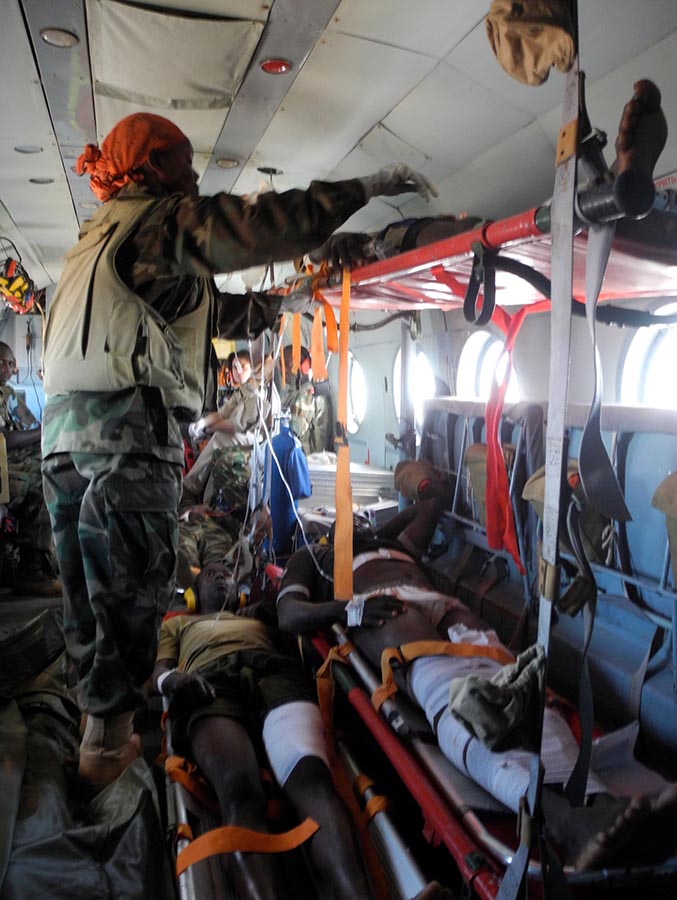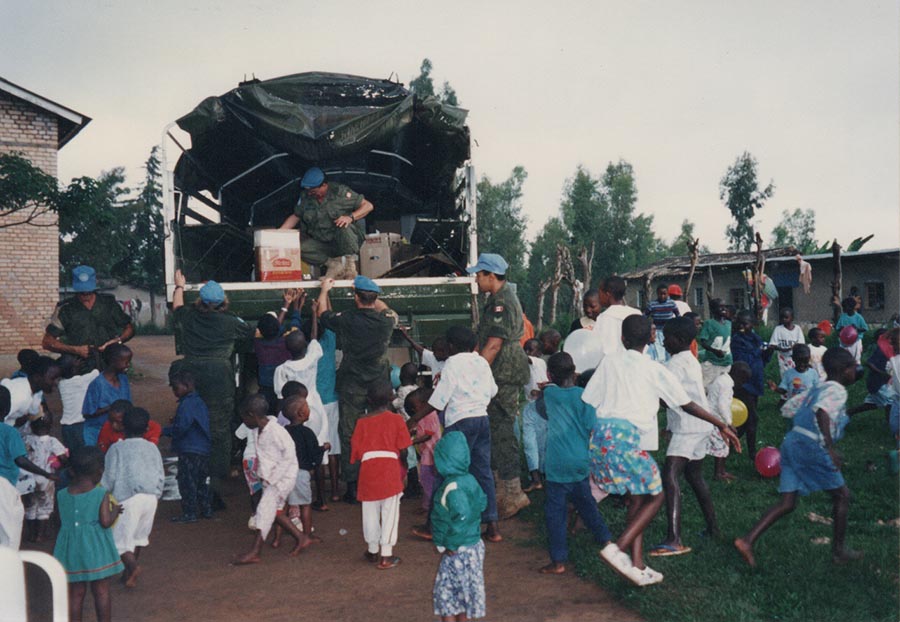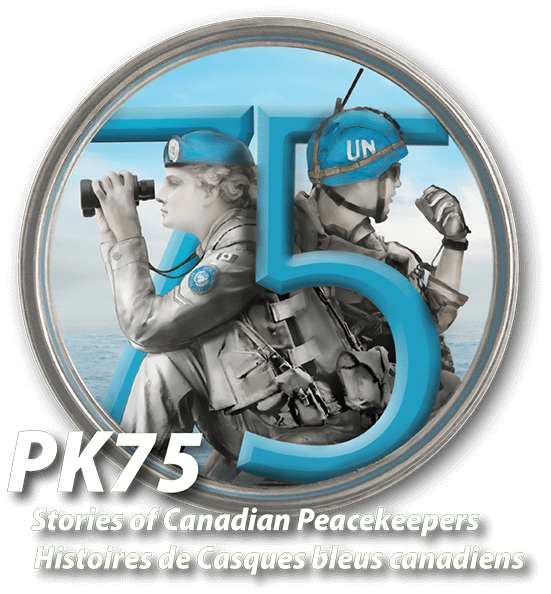




United Nations start-up missions usually operate in austere, volatile, and remote environments. There is a significant lack of information on the local political, security, infrastructure, and population conditions. A new UN mission needs to deploy thousands of military, police and civilians along with their equipment from around the world; commence humanitarian activities to relieve suffering; commence political dialogue between all parties; protect human rights as well as women and children; secure contracts for camp construction, rations, fuel, maintenance, ground and air transportation, communication/IT and medical support services; and other mandated tasks as directed by the UN Security Council.
I had the privilege to participate in four start-up UN missions Rwanda, Darfur, Somalia, and Central African Republic. Standing up a new mission is much more an art than a science. Each mission faces unique issues be they a lack of local resources such as fuel, food and drinking water; lack of transportation infrastructure such as airports, roads, and seaports; slow deployment of military, police, and civilian personnel; political interference from national, regional and/or local actors; poor weather; violence directed at mission activities; etc. Below are a few examples where creativity, urgency, and a “can do attitude” saved lives.
For UNAMIR in Rwanda, after the genocide, it was essential to deploy new infantry battalions to their sectors even before the arrival of their vehicles. The Ethiopian battalion needed to move from Kigali to Cyangugu, over a mountainous 270 km route. There were no passenger vehicles or buses to move them. A couple of commercial flatbed trucks and a few dump trucks were secured in Kigali. The 600 soldiers stood on/in these vehicles for the whole trip. All agreed it was better than marching.
In Darfur, over 120 UN police were on the ground in El Fashir. Seventy newly arrived UN police patrol vehicles were stuck in Port Sudan, 1800 kms away, as no commercial transport was available to ship them. Rather than wait for the vehicles to be commercially delivered, the police were flown to Port Sudan on UN aircraft. They then drove for three days across the desert to El Fashir so they could start their patrolling tasks.
From mid-February to early March 2011 in Somalia, the African Union Mission in Somalia (AMISOM) suffered over 200 serious casualties as they fought to retake the city of Mogadishu. The United Nations Support Office AMISOM (UNSOA) was responsible for providing medical support to AMISOM. The number of AMISOM casualties was not normal for a UN mission. UNSOA quickly secured additional commercial contracts, help from donor Member States, as well as borrowed UN medically equipped aircraft from other UN peacekeeping missions to evacuate the injured to hospitals. UNSOA also secured medical services in civilian hospitals in Kampala, Djibouti, Nairobi (six different hospitals), Mombasa, and South Africa. At one point, every Intensive Care Unit bed in East Africa was being used by an AMISOM soldier. UNSOA’s evacuation efforts resulted in a casualty evacuee survival rate of over 98 percent.
The start-up for MINUSCA commenced just as the rainy season began. The roads were muddy rivers. Both local officials and the French Army forces stationed in CAR stated that all movement had to be by air because roads were impassable. MINUSCA needed to immediately deploy an infantry battalion to the east of the country. A newly arrived engineer unit was tasked to escort the infantry battalion to its sector. A 5–10 km section of the road was rapidly repaired by the engineers. The battalion’s 100 vehicles and 300 sea containers immediately followed on the repaired road as it became impassable in less than a day. The convoy “inched-wormed” for 3 weeks to complete the 200 kms trip. The battalion was able to set up its camps and commence patrolling long before the rainy season ended.
I would like to make the following point about Canadians deployed on peacekeeping activities, be they military, police or civilian. Canadians have a synergetic positive impact on mission success. We are used to operating in diverse cultural and social environments, have a “can do” attitude, promote cooperation and communication as well as work long hours/days. The senior mission leadership teams, from each of the missions I served, constantly asked if Canada could provide more personnel because every unit, section, detachment, patrol with a Canadian in it was motivated and effective. Keep this tradition alive should you deploy on a peacekeeping mission.
Biography
Colonel Mike Hanrahan (Retired) served 37 years with the Canadian Army as a Signals Officer. During his military career Mike commanded at each rank level; did operational and technical staff assignments; instructed at the army staff college; did exchange tours with the UK and a diplomatic tour with the Permanent Mission of Canada to the United Nations. This biography is focused on his peacekeeping activities which included Egypt, Cyprus, Rwanda, Bosnia, Darfur, Somalia, and Central Africa Republic.
As a young Lieutenant, Mike deployed, in 1976, to United Nations Emergency Force II (UNEF II) in Egypt with 73 Canadian Signal Squadron, and was responsible for Radio Troop. His troops were deployed in small detachments supporting UN units deployed in the Sinai buffer zone as well as at UN offices in Alexandria, Cairo, Ismailia, Port Said, Suez, Tel-Aviv, Jerusalem, Tiberius, and Damascus. All operational and administration reports required by UNEF Headquarters were sent by these Canadian detachments. He spent weeks driving in the desert in an open jeep visiting each detachment, paying them, bringing mail and supplies, replacing equipment, and rotating personnel.
Two years later, he deployed with the 1st Battalion Princess Patricias Canadian Light Infantry to UNIFCYP in Cyprus as the Regimental Signals Officer. The signals troop was responsible for ensuring effective communications to observation posts along the buffer zone. This mission was well established, so significant time was spent installing permanent communication cables and towers replacing years of temporary solutions.
In 1994, Mike deployed as the Canadian Contingent Commander to support Major-General Dallaire, who was commanding the United Nations Assistance Mission in Rwanda (UNAMIR). The Canadian contingent was responsible for supporting the mission headquarters, providing communications to all UN deployed units, providing logistic support to newly arriving units, as well as operating Kigali International Airport. The contingent adopted nine orphanages. At Christmas, 50 tons of clothes and toys, received from Canada, were distributed to the children.
In 1998, Mike deployed to Bosnia with the NATO Stabilization Force (SFOR) as the senior Signals Officer. His international staff and units were responsible for ensuring NATO and SFOR national military communications systems interoperated effectively. During the tour, SFOR provided communications to thousands of polling stations to ensure security during the national elections.
From 2002–2006, Mike was the Military Adviser to the Permanent Mission of Canada to the United Nations in New York. Canada chairs the UN Special Committee for Peacekeeping Operations Working Group for 130 Member States. Mike spent most of his time coordinating new UN peacekeeping policy reform measures for the working group. He also designed and validated the UN Senior Mission Leaders Training Program for new UN mission leaders.
Mike retired from the army in 2007 and immediately deployed as a UN civilian staff member to the United Nations — African Union Hybrid Mission in Darfur (UNAMID). He managed the implementation of construction, transportation, fuel, and rations contracts, and oversaw the construction of three super camps with transit camps, hospitals, fuel depots, warehouses and training facilities for the 17,000 mission personnel.
From 2009 to 2013, as a member of the United Nations Support Office AMISOM (UNSOA) staff, Mike provided logistical support facilities and services across Somalia to permit the UN Political Mission in Somalia (UNSOM) and the African Union Mission in Somalia (AMISOM) to carry out their mandated tasks. He led a multi-disciplined civilian/military logistical support team, based in Mogadishu, that supported the 18,000 AMISOM troops and 600 UN staff with rations, fuel, air transportation, camp construction, vehicle and equipment maintenance, medical services, communications, and IT.
In 2014, Mike was appointed Director of Mission Support for the start-up of the United Nations Multidimensional Integrated Stabilization Mission in the Central African Republic (MINUSCA). He planned and implemented the mission deployment, support, and sustainment requirements for 10,000 troops, 2000 police and 1400 civilian staff. Central African Republic had one international airport ; was 1400 kms away from seaports ; and the rainy season washed out most in-country roads for months. Every day his international team had to solve complex support issues.
On retirement from the United Nations, he set up a consultancy service, which was leveraged by the UNHQ and UN peacekeeping missions to assist them develop and implement their supply chain management policies, processes, and procedures.
Mike is now fully retired in Victoria with Ellen, his wife of 47 years. They enjoy travelling with friends and family, encouraging their grandchildren’s athletic and artistic pursuits, as well as road cycling and other fitness activities with their 90-pound Labrador.

UNSOA Medical Evacuation of AMISOM soldiers, Feb/Mar 2011. AMISOM patients were usually evacuated to Nairobi as it had the most ICU beds. Those with serious head or eye issues were sent onward to South Africa. During the heaviest fighting the U.S. and France sent medical aircraft directly into Mogadishu to evacuate patients to Djibouti and Kampala.

Rwanda 1994 Xmas. Canadian contingent soldiers distributing the clothing, toys, etc., at one of the orphanages. The regimental wives club collected donations for the orphanages from across Canada. They had various air carriers ship the 50 tons of stuff to Nairobi, Kenya. I sent a route recce team from Kigali to Nairobi to test the route and secure places for unit to stay when driving to Mombasa where our vehicles would be shipped by sea back to Canada, as all our vehicles were returning to Canada.


